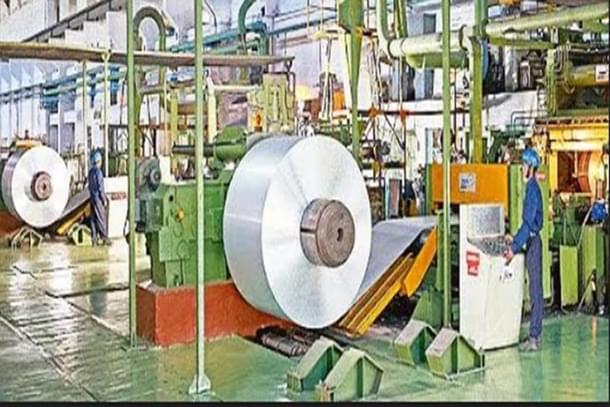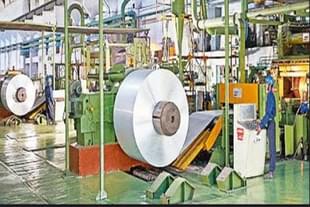News Brief
What Spooked Hindalco's Investors?
Business Briefs
Apr 06, 2022, 12:23 PM | Updated 12:43 PM IST
Save & read from anywhere!
Bookmark stories for easy access on any device or the Swarajya app.


Despite a dream run for metal stocks over the last two years, Hindalco’s shares have fallen by 5.45 per cent over the previous month. In contrast, the Nifty metal index went up by 8.2 per cent over the same period, indicating that Hindalco’s investors do not share the optimism in other metal stocks. While the stock has moved up by 67 per cent over the last year, the current pessimism is the result of the company’s new capital expenditure plan.
The company has announced an investment plan of around $ 8 billion to be invested between the financial year 2023 and the financial year 2027. Of this, around $ 3.37 billion would be invested in India across the company’s copper and aluminium businesses.
Another $ 4.5-4.8 billion would be invested by Novelis, a subsidiary of Hindalco, across its businesses in Asia, North America, Europe, and South America. During the FY11-18 period, Novelis had cumulatively invested $ 2 billion in capital expenditure to enhance its capacities, and the next cycle of CAPEX begins in FY23. Around $ 460 million of the introduced CAPEX would also be spent on coal mines, as the operations require energy. However, to lower its carbon emissions, the company has been investing in renewable energy projects.
Apart from coal mines, Indian investments would include upstream and downstream investments in Alumina, speciality aluminium and the copper business. For Novelis, around $ 4 billion would be spent on recycling-related projects, while the balance is spent on de-bottlenecking, cold mills, upgrades etc.
The company’s consolidated revenues stood at around $ 17 billion for FY21, while operating profits stood at around $ 2 billion. The announcement of the large growth capital expenditure plan spooked investors and resulted in the decline of the stock over the last week.
Given the nature of commodity businesses, the increase in investment should not be a surprise for investors. Capital expenditure is usually of two types – maintenance CAPEX and growth CAPEX. While the former expenditure aids in maintaining production at current levels, the latter investment is focused on growing the company’s production and subsequently, revenues.
Hindalco had already been operating near full capacity in FY21, and with the boom in commodity prices, it was only natural for the company to have gone ahead with its capex plans. Copper and Aluminium, the two commodities that Hindalco deals in, have gone up by 119% and 139.4%, respectively since the lows made during March 2020. As a result of the increase in commodity prices, the company’s profit margins and cash flows have increased. Operating margins for the trailing twelve months stood at 15 per cent, compared to 8 per cent in 2015, when the commodity market was suffering from excess supply and low demand.
Given the cyclical nature of commodity industries, producers usually begin reinvesting into the business and increase capacity to take advantage of higher prices and prepare for the next commodity boom. As a result, the free cash flow, which had been increasing until then, suddenly turns negative or is significantly lower.
Apart from Hindalco, Tata Steel, Vedanta, and other metal companies have also introduced capital expenditure plans over the last year. In 2021 Tata Steel unveiled its plans to invest Rs 60,000 crores ($8 billion) over the next five years after steel prices rose along with other metal prices. Hence, while the market was surprised by the introduction of Capex plans, ramping up of new investments during an up-cycle, remains a hallmark move in commoditised industries. Ultimately, this very excess capacity results in oversupply and an industry-wide downturn. Sudden capital expenditure plans should be expected by investors when investing in commodity businesses – especially when investing during a commodity boom. Increasing investment right in the middle of high commodity prices would also mean higher costs for constructing new facilities, increasing the payback period.
Nevertheless, investors should remain careful when investing in commodity businesses dependent on global demand-supply scenarios. Currently, commodity companies are minting money as years of low commodity prices led to underinvestment in production capacity. The current supply chain crisis has added further strain on the system and resulted in increased prices for commodities. Once supply meets or exceeds demand, prices would probably move lower again - till then, and high prices are likely to persist.





